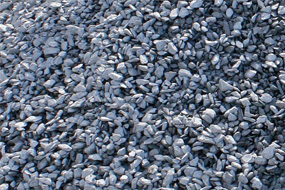TECHNICAL INFORMATION
Home Page
> TECHNICAL INFORMATION > General Information on Aggregate > What Is Concrete Aggregate ? >
What Is Concrete Aggregate ?
I. Definition and CharacteristicsConcrete Aggregates are used to make non-organic, natural or artificial materials that are usually combined with binding material consisting of cement and water in the construction of concrete or mortar, usually formed by unbroken or cracked granules that do not exceed 100 mm a stack (sometimes not exceeding 63 mm).
Some examples of various aggregates used in concrete construction are: fly ash aggregates obtained from sand, gravel, ballast, blast furnace slag, baked clay, pumice, expanded perlite and volcanic ash. Aggregates constitute about 70-75% of the volume of concrete.
Among the technical characteristics provided by the use of Aggregate in concrete, the following benefits are considered as the primary outcomes: prevention or reduction of the "volume change" of hardened concrete, increasing the "resistance against erosion" or increasing its" resistance" to environmental impacts and providing 'resistance' against loads that the concrete is carrying due to its high bearing capacity.
Many properties, such as strength, porosity, water permeability, mineral structure, grain shape, gradation, surface roughness of grains, maximum grain size, module of elasticity, thermal expansion coefficient, whether the aggregate contains clay and cleanliness of the aggregate that is used in concrete affects one or more than one endurance types of the concrete.
- It is mandatory to pay attention to the following points in aggregate production centers, at concrete plants and in workshops when storing and transporting aggregate batches:
- Precautions should be taken to avoid contamination of aggregate particles. Care must be taken not to contaminate the aggregate or cause any harmful substances to enter in the Aggregate as a result of carelessness. While forming aggregate stacks, a hard and clean floor should be selected, if possible, or aggregates should be stacked on this floor by preparing concrete slabs; Aggregate piles can be placed on such a floor by spreading sand, gravel or rock fragments before the stacking process begins. Precautions should be taken that the water in the aggregate is easily drained. Care should also be taken that the loose earth grains in the environment do not mix with the aggregate by the help of the wind.
- Decomposition should be avoided. Precautions should be taken to prevent segregation of large aggregates and fine aggregates in a batch by placing aggregates in separate places during the storage, transport or storage of the aggregates.


